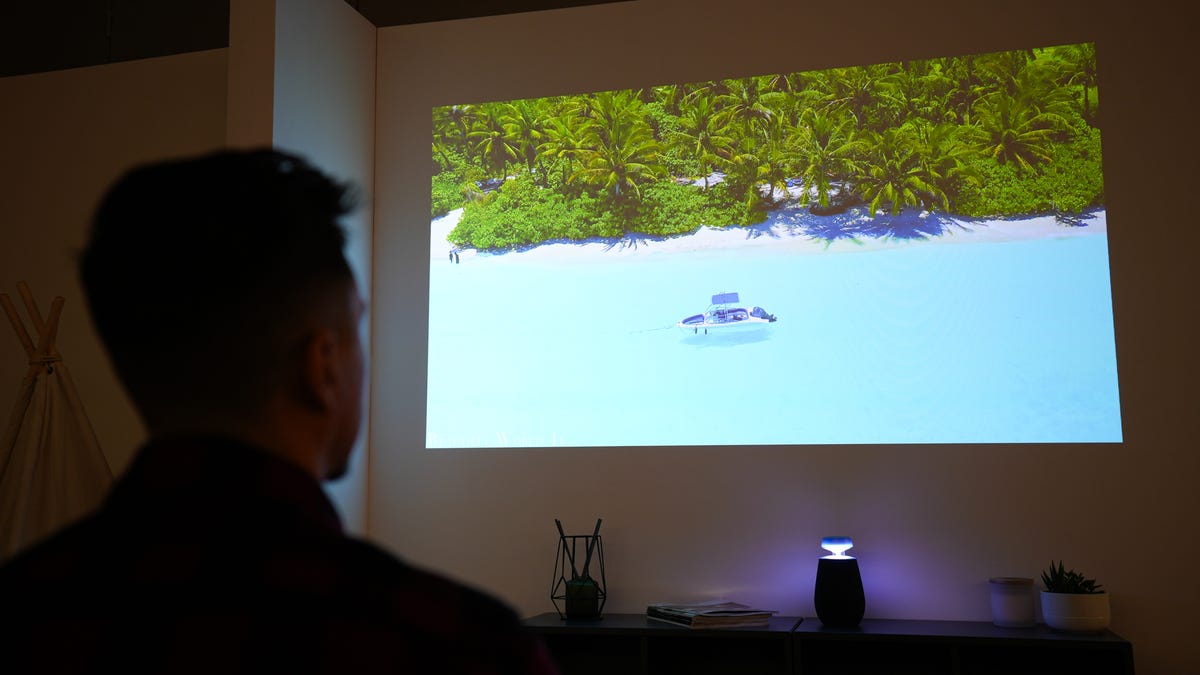- I recommend the Pixel 9 to most people looking to upgrade - especially while it's $250 off
- Google's viral research assistant just got its own app - here's how it can help you
- Sony will give you a free 55-inch 4K TV right now - but this is the last day to qualify
- I've used virtually every Linux distro, but this one has a fresh perspective
- The 7 gadgets I never travel without (and why they make such a big difference)
I changed these 3 settings on my projector for the best picture quality

Beyond TVs, projectors have become a go-to entertainment device for folks in smaller spaces or those who simply want a big-screen viewing experience without the bulk. Say you’ve already settled on a projector for your home, but you’re not quite satisfied with its visual output. What should you do next?
Also: The best TVs under $1,000: Expert tested
Many projectors in today’s market have autofocus and keystone correction features, but that’s not where your adjustments should end in terms of improving picture quality. For basic fine-tuning, there are other factors that can really help the images pop with vibrance and clarity. Here are the three biggest factors.
1. Focus and resolution
For starters, ensure that the content you’re viewing matches your projector’s resolution. Naturally, 4K content on a 4K projector will appear extremely sharp and detailed.
Proper focus is key to a clear image. Ideally, you want a sharp image from corner to corner. If your projector doesn’t have autofocus, use the focus wheel to make the center of the screen as sharp as possible.
Also: This magical light projector is the smart home accessory I didn’t know I needed
Most projectors come with a keystone adjustment feature, designed to fine-tune the focus at the top and bottom edges. If the projector isn’t perfectly aligned, keystone correction can help reshape the image into a perfect rectangle instead of a trapezoid. However, use keystone correction sparingly, as it can reduce image quality.
In fact, CNET’s Geoffrey Morrison strongly advises against using keystone correction. As he explains, “Keystone adjustment lowers the resolution of the image since you’re no longer using the entire image-creating chip or chips, and it also introduces a new layer of video processing that can add artifacts, further reducing quality.”
2. Brightness and contrast
Adjusting brightness and contrast can significantly enhance image quality and depth. To calibrate these settings effectively, use a movie scene with a mix of dark and bright areas. Contrast refers to the difference between the darkest and brightest parts of an image, so pay attention to this distinction.
Increasing contrast can make colors more vivid, while lowering it can cause them to appear washed out. Aim for a balanced level that reveals details in both light and dark areas, and fine-tune the contrast to achieve bright whites without losing highlight detail.
Also: The best projectors of 2024: Expert tested and reviewed
Another key factor is your viewing environment. In a dark room, choose a lower brightness setting, while a brighter setting is better suited for rooms with ample daylight. The goal is to have black areas appear truly black while preserving shadow details.
Brightness should be high enough to maintain clarity, and contrast should be adjusted to prevent details from washing out in bright scenes. Ambient light conditions also play a role, so you may need to tweak these settings depending on whether you’re watching during the day or at night. For a more cinematic experience at any time of day, blackout curtains can help recreate the feel of a theater even in full daylight.
3. Color temperature and projection surface
Color temperature determines the overall tone of a projected image, ranging from warm (reddish) to cool (bluish). Warmer temperatures are ideal for movies and general viewing, while cooler temperatures may be better suited for gaming or web browsing.
Some projectors offer advanced calibration options for color temperature, such as RGB (red, green, blue) settings. Others come with preset modes like cinema, vivid, or custom settings that allow for further experimentation.
Also: I tested the world’s smallest projector with Google TV, and it blew me away
This brings us to the matter of your projection surface. While it’s not the most critical factor, having a large enough surface is essential—especially if you don’t have a high-quality projection screen designed for your projector’s resolution and brightness.
A blank wall works fine, as long as it’s white or gray. Ideally, the wall should be smooth, clear, and painted with projection-friendly paint, such as Ultra HD Premium Screen Paint. Keep in mind that matte white projector paints reflect more light than gray ones, which tend to absorb more.
Ultimately, you can significantly enhance your projector’s picture quality by focusing on these key elements — no advanced technical knowledge required.

